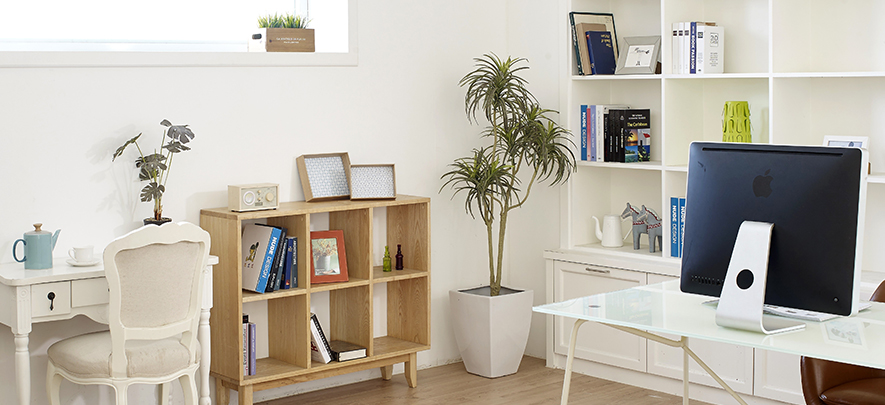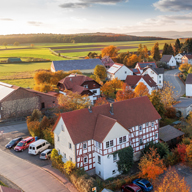Understanding Vastu and Feng Shui to build harmonious living and working spaces

Health & Lifestyle
379 week ago — 5 min read
Age old philosophies often hold wisdom whose full meaning is lost to us today. In India, the practice of Pyra Vastu has been used to design houses in appropriate ways since time immemorial, and China has also seen the practice of Feng Shui develop, to determine how structures are made most suitably and auspiciously. Though the philosophies might seem prescriptive, giving directives that might not have readily apparent meaning, it has been discovered with recent study that there is science to some of the directives to Pyra Vastu and Feng Shui. This article will explain how these philosophies understand energy in nature, its impact on man and aim to balance structures in which people live and work in with their surroundings to improve quality of life.
Vastu, Feng Shui and energy
Vastu and Feng Shui help us understand a property’s energy flow and its suitability for occupants. It can be applied in all areas- from plot selection, shape and size of the building, placement of rooms, door and window positions, interiors, furniture placement, colours, shapes and designs, placement of art, and much more.
Most of the people follow basic rules and don’t fully understand the science behind the rule. Each suggestion of Vastu and Feng Shui has some logic and reason. For instance, it is said that the kitchen should be in the Southeast (SE) corner of the house; however, what’s the science behind this? To understand it better, we need to studythe wind movements; generally, in India the wind flows from SW to NE or NW to SE. This is why Vastu would recommend keeping the kitchen in SE. Also, when you kitchen faces SE – East, sun rays in the morning will enter the kitchen directly, which helps in cleaning off bacteria generated overnight. By understanding this concept, we realise that architecture and Vastu go hand in hand. Vastu and Feng Shui is not at all in opposition to architecture or interior design.
It is important to understand the meaning of energy to understand Vastu and Feng Shui better. Energy means Shakti / Prana (in India), Chi (in China), Ki (in Japan), Kaa (In Egypt). Energy is an unseen force like an electric current, solar energy, lunar energy, kinetic energy, wind etc. According to the principles, there are fundamentally two types of forces in the entire universe, which are equally opposite in nature. These two forces or energies are identified as Yang and Yin i.e. positive and negative. When these two forces meet and spark, a beginning is created and the energy begins to dance, which is called “Bioforce” or Prana.
By observing day-to-day activities, it is observed that everything is in motion, everything keeps on changing. Electrons spin around a central nucleus in the atom; the earth rotates around its axis while orbiting the sun; day follows night; winter follows summer and then back to winter again. During the day human beings are in a vertical position, are active, and during the night human beings are in horizontal position. They lie down and take rest.
The house is like a living entity. The energy of the premises affects the occupants. Energy is an unseen force, which cannot be seen but can be experienced (like the air in the atmosphere). Colours, shapes and design play a very important role in deciding whether it is yin or yang, hence it is very important to consider Vastu and Feng Shui principles when designing a property.
Conclusion
By developing buildings and homes without awareness of how the ‘interiors’ and ‘exteriors’ affects the energy, it unintentionally imbalances the energy field of property. This imbalance subsequently affects the body’s internal energy fields as each and everybody part/organ is directly connected with the living space. Energy works as the main nutrient of the property. Harmonious and balanced internal circulation of energy is very important for health and success.
Some tips to maintain positive energy flow in your workspace:
-
Avoid dark colours on walls.
-
If flooring is dark in colour, it is important to have light-coloured walls.
-
If you like using dark colours on walls, you must ensure that the flooring is light.
-
Ceilings should be white.
-
Sunlight must enter the premises; hence, it is recommended to have windows on the East as well as on West, or at least on one side. Make sure curtains are open for a while to allow the sunlight into the premises.
To explore business opportunities, link with me by clicking on the 'Invite' button on my eBiz Card.
Disclaimer: The views and opinions expressed in this article are those of the author and do not necessarily reflect the views, official policy or position of GlobalLinker.
View Harshit 's profile
SME Inspirations
Most read this week














Comments
Share this content
Please login or Register to join the discussion